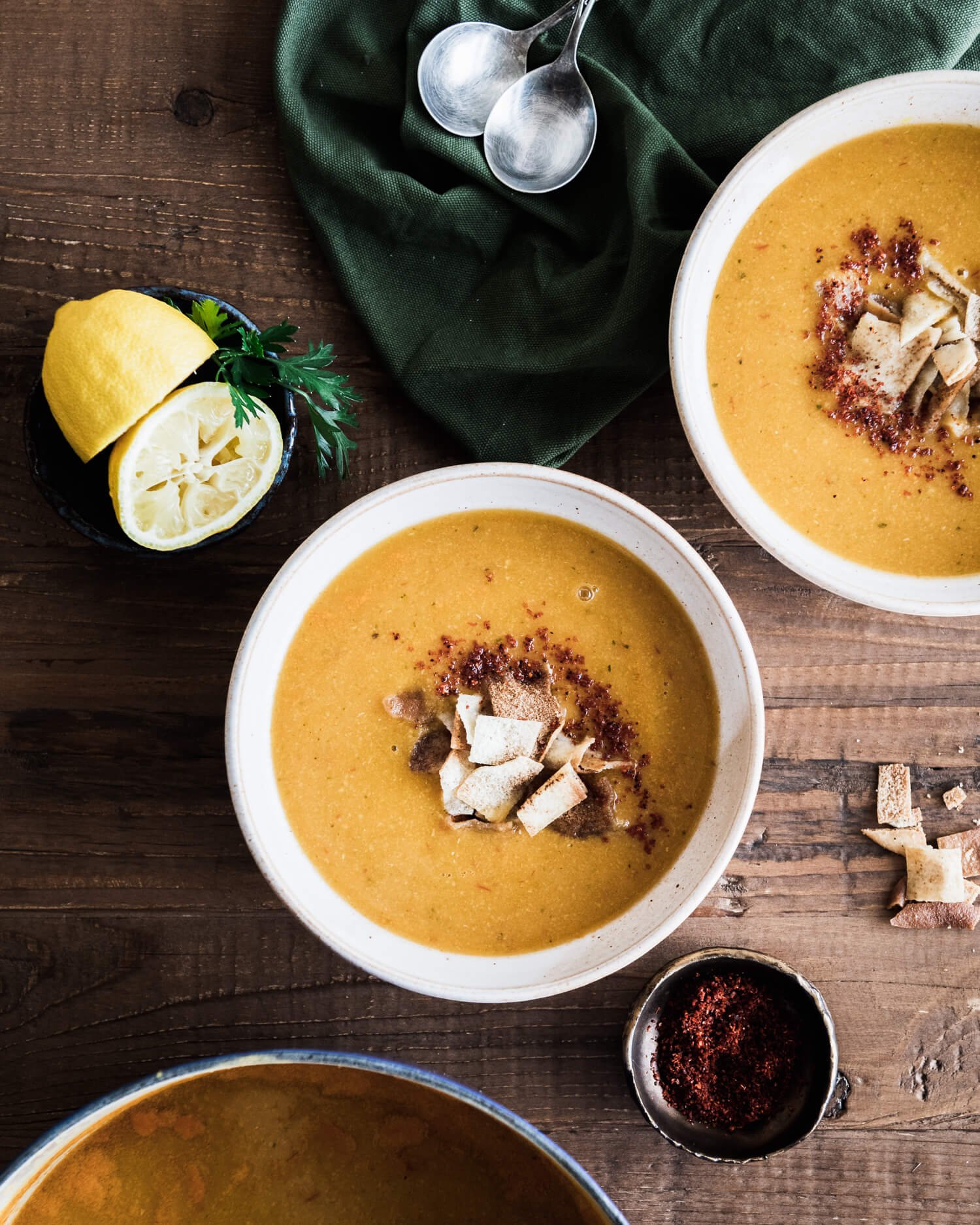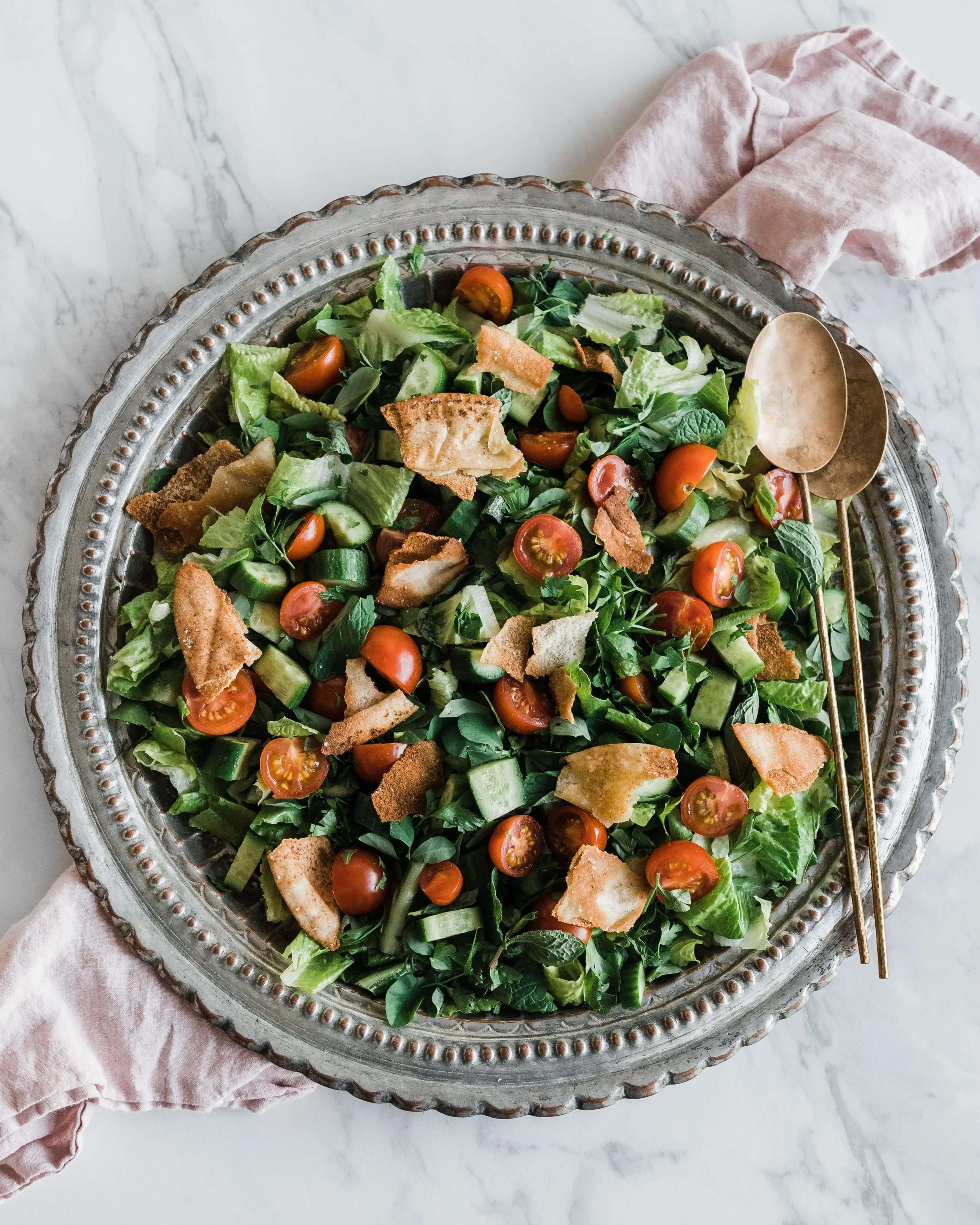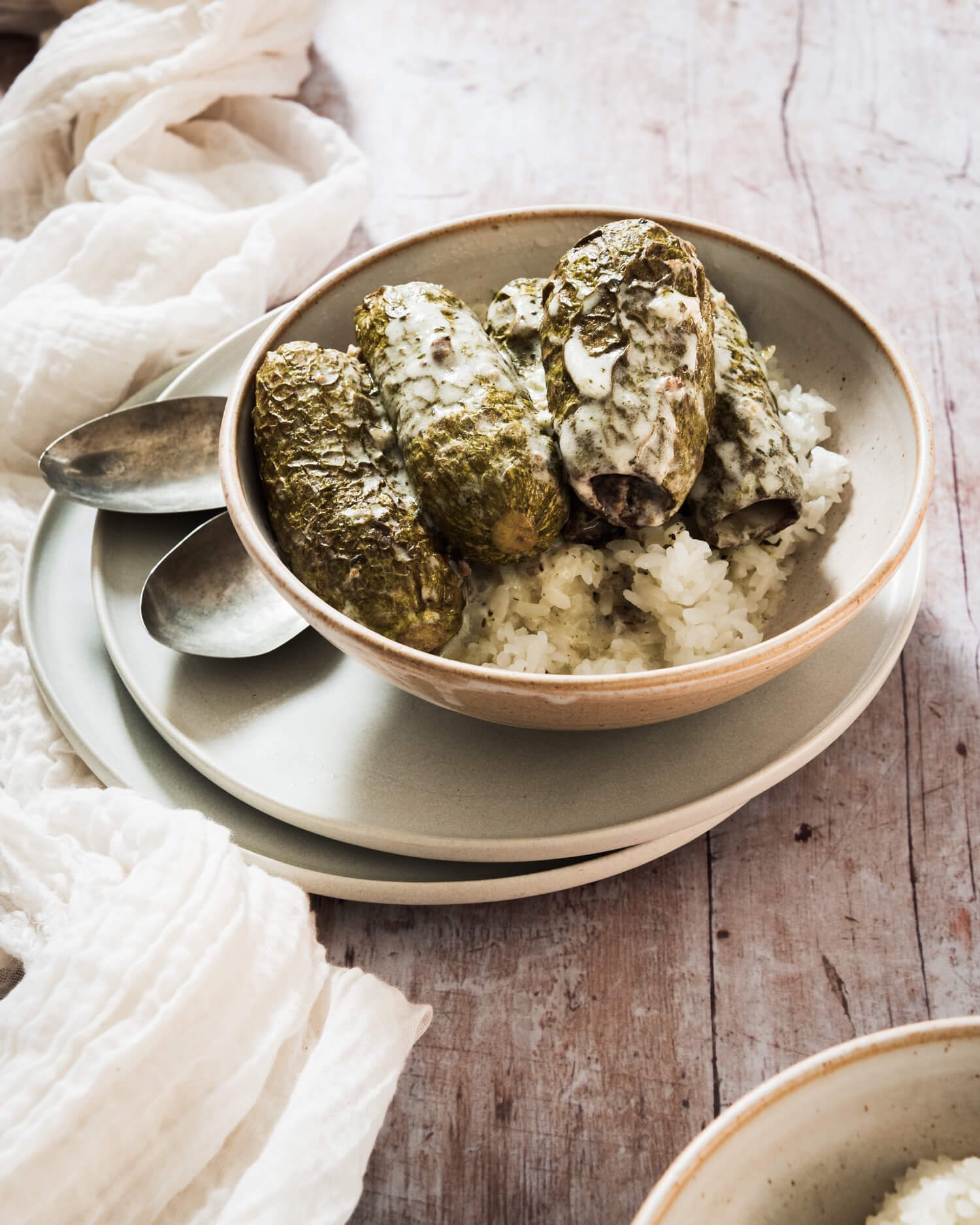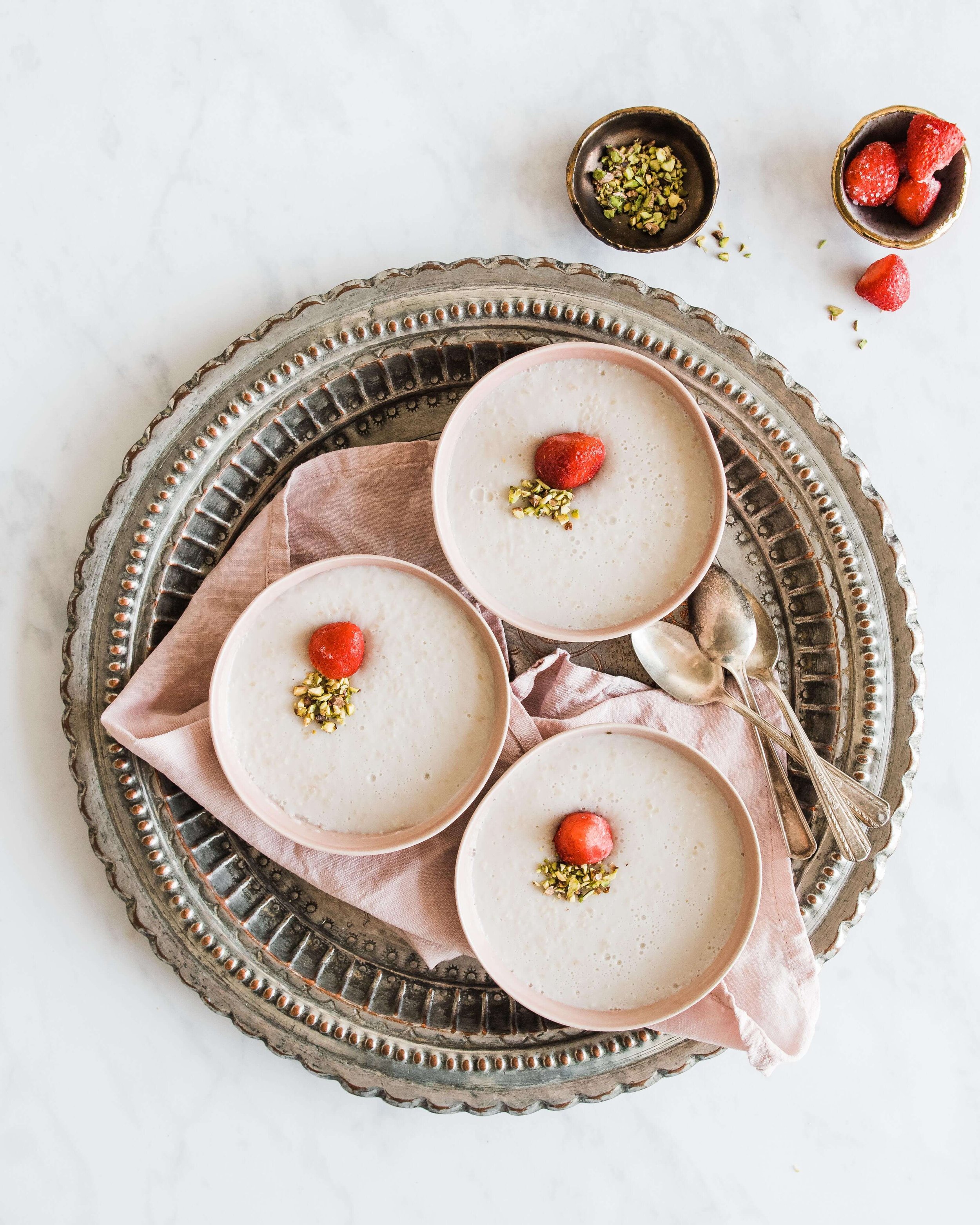During Ramadan, Muslims abstain from food, water, and other indulgences from dawn until sunset for 30 days. It’s a time to purify the soul, give to those less fortunate, and pray. Many of us spend all day dreaming out about our breaking fast meal (iftar, which comes from the root word ftoor, meaning breakfast). Gathering around an iftar table is always a joyous occasion. Below you’ll find my favorite 17 foods to eat during Ramadan.
Soup
I love yellow lentil soup because it’s veggie-filled, flavorful, and a bit lighter than the traditional Shorbat Adas. This is my go-to in the beginning of Ramadan, and I also serve it throughout the month.
There’s nothing like traditional shorbat adas, or lentil soup. Hearty and soulful, it’s loaded with cumin, making it super earthy. Topping with croutons and a squeeze of lemon juice bring me right back to my childhood.
This is always a favorite towards the middle of the month. It’s bright, protein-filled, and super creamy (but without cream).
Salad
Salad is an absolutely necessary source of fiber during the month, especially when our digestion sits latent for most of the day. It also helps me stay full longer. The combo of sumac, lemon juice, pomegranate molasses, balsamic vinegar, and olive oil is so welcoming at an iftar table.
Bread
Having a piece of cheesy bread is so delicious next to a nourishing bowl of soup. Their salty, creamy, and parsley-filled cheese mixture with pillowy dough is so irresistible.
Similarly, I love to serve these tangy, spinach-filled triangles during iftar. I find myself reaching for more throughout the night!
My mom recreated Palestinian Za’atar Bread when a Palestinian lady in Chicago stopped selling hers. We loved it so much, we just needed more. I use za’atar leaves (not the spice mix), which I dry myself in the oven. You can also use fresh za’atar or oregano.
This crispy, crunchy, rolls are filled with chicken, caramelized onions, lots of sumac, lemon juice, and Aleppo pepper paste. They’re jam-packed with flavor and so good next to a bowl of soup.
Mains
Fattet Hummus, with it’s creamy sauce, crunchy pita, pine nuts, and bright Aleppo pepper garlic, is such a heart-warming way to break fast. During normal months, it’s common to serve during breakfast. During Ramadan, it moves to iftar.
Meat, onion, and pine-nut stuffed courgettes/baby zucchini/kousa are served with a garlic and mint yogurt sauce on top of rice. Feel free to stuff and fry the kousa before cooling and freezing. After that, the yogurt sauce comes together so quickly, meaning you can thaw the stuffed kousa and have dinner together in about 10 minutes.
Silky, baby eggplants, are stuffed with the same meat, onion, and pine nuts mixture as sheikh al mehshi (above) before being roasted in an onion-rich tomato sauce. It’s a great way to use up any leftover stuffing.
A similar stuffing of meat and onions (without the pine nuts) is filled in doughy dumplings before being cooked in yogurt and topped a garlic cilantro mixture. It’s served as a soup, and kibbeh can be added if there’s any on hand. The dumplings freeze well after baking for about 30 minutes, making it an excellent meal prep option.
An unexpected way to serve kibbeh, Kibbeh Fakdiyyeh is made with a yogurty and tahini-filled sauce with fried cauliflower. It’s balanced and creamy with some added texture from the cauliflower.
Sweets
I love a make-ahead dessert. Vegan Kishk al Fuqara uses crushed blanched almonds, almond milk, coconut cream, orange blossom, and smashed mastic for a flavorful, creamy treat that comes together in about 10 minutes. It sets in about 2 hours, but it’s best overnight.
These crispy, syrup-soaked, cheese or walnut-filled pockets are almost exclusively eaten during Ramadan, maybe because their decadence feels very much well-deserved. They’re similar to pancakes but only cooked on one side, making the other side very easy to seal.
Another version of the Ramadan favorite pancake, but these are smaller, cream-filled, and served cold. They’re an excellent make-ahead treat.
Namoura is a semolina and almond cake that is soaked overnight in syrup, like many other Arabic desserts. It’s nutty, sweet, and moist from the use of yogurt in the batter. The best part is that it keeps in the fridge for weeks.
I hope you enjoyed this recipe roundup! Content like this often makes it into my meal prep plans, where I map out the month with weekly recipes and grocery lists. You can also find me on Instagram, Pinterest, and now Tik Tok!


















